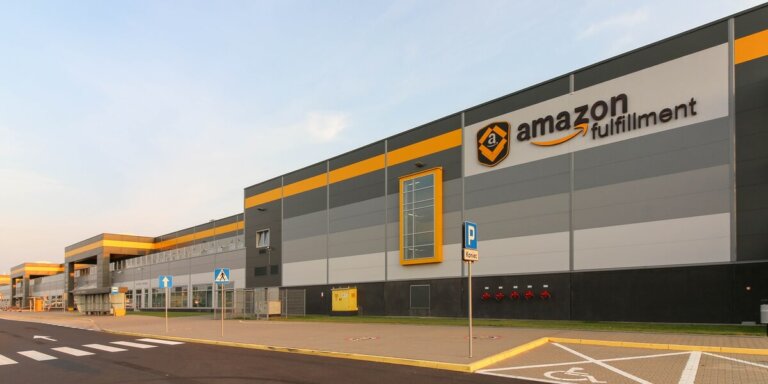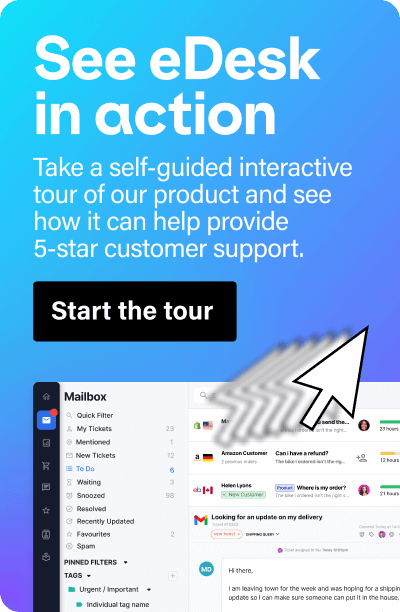When selling on Amazon, you must choose between several shipping methods. You can either ship directly from a factory to the FBA warehouses, use a third-party FBA service, use your own warehouse or fulfil the orders yourself via Seller Fulfiled Prime.
If you decide to use your own warehouse or fulfil the orders yourself, you will have to take a couple of things into account; these will influence your overall costs, products, fulfilment options, as well as shipping speed.
So, let’s see the difference between relying on Amazon fulfilment and owning your own warehouse.
Amazon Fulfilment
As you may know, when choosing to fulfil your orders through Amazon Fulfilment, you basically send the items that you have to sell to their centres, after which they will store them until delivery.
With Amazon Fulfilment, you will likely want your products to be in the same condition as the fulfilment centre, or in a sales-tax-free state so that you avoid a double nexus – paying more fees on your side.
In short, this program will pick, pack, and then ship a seller’s orders – you basically don’t have to deal with everything implied by the sale process, so to speak. On top of that, the people at Amazon also have the tools required to scale your business accordingly and, ultimately, help you reach more customers.
Naturally, there are a couple of noteworthy benefits that come with Amazon Fulfilment:
- For example, if you don’t have your own way of shipping your items, then you can make use of FBA to enjoy FREE Shipping or Amazon Prime free Two-Day Shipping. This means that your customers won’t have to worry about shipping fees on certain eligible orders.
- Probably the best benefit, so to speak, is the fact that your customers will enjoy Amazon’s own customer service and returns services. If something goes wrong with your items or so, you will not have to deal with this personally.
As you can see, the Amazon Fulfilment program is fit for more than just a couple of businesses. With it, you can easily ship your items all over the world, without having to worry about too many things – or, as Amazon says, without having to fill in more than just one position in your business.
Still, this program is fit for rather small and medium businesses that could use a bit of help in terms of shipping and save some money on fees and such. On the other hand, when it comes to a larger business – or sellers that sell in large batches -, one might want to simply work with their own storage and delivery companies.
A proper warehouse and a favourable contract with a delivery company or such can, in fact, save you as much or even more money than when using the Amazon Fulfilment program.
Discover how to understand fulfillment costs.
Owning a Warehouse
Most people think that warehouses are expensive and don’t come with benefits for the seller in the long run, mainly due to the costs required to properly set them up. Onsite warehouses are easy to build in kit form and are usually made of steel, they can cost less than FBA over a number of years, making them a good choice for sellers who want to handle the products they sell on their own and potentially save costs. The downsides are increased upfront costs, reduced flexibility and more to think about.
Still, when using your own warehouse, there are a couple more things that you have to consider:
- Selling oversized items can make it difficult for you to get the products to the customers as soon as possible.
- The warehouse has to be close to a large area of geographic demand. This makes it easier for your products to reach their destination faster.
- You also have to take into account the strict requirements for fulfilment and shipping that Amazon has.
- Utilities, sales nexus, property taxes, and the cost of additional services have to be considered as well.
- The direct cost of the rental.
On top of that, your warehouse must also have the appropriate size and layout. Naturally, given the many purchase options you have, it won’t be hard for you to find one. The hardest part, however, is determining which one will fit your needs best.
For example, the warehouse must offer environmental protection, meet the physical requirements for storage size, have a proper layout, and support your lot-size requirements in terms of storage.
You will also need to invest in some technology to help you pick and pack your orders which can range in cost from a few hundred dollars per month to a few thousand depending on the order quantity and staffing levels.
However, even though it seems that you have a lot more work to do when you decide to use your own warehouse, there are still some benefits that can make this work in your favour. For example:
- You will have much more control over your inventory. This is because you will create and manage the product listings and then handle picking, packing, and then shipping your orders. On top of that, you can also access your inventory whenever you want and store it wherever you have, need, or want to.
- Obviously, a warehouse comes with lower costs in terms of storage fees. You will not have to pay Amazon these fees and, instead, you will absorb them directly. Basically, you can make a higher margin with every sale even if your overall margin could be lower.
- Moreover, if your business qualifies, you can still access some of the benefits Amazon Fulfilment comes with even if you use your own warehouse. This is known as Seller Fulfiled Prime and it can help you showcase your products on Amazon when you sell in a pricey and time-competitive category.
This makes up for balance if we could say so, between the Amazon Fulfilment program and owning your own warehouse. All you have to do is take a good look at your business and the items you sell, and then decide which of the two would fit you better – in terms of both profit and sustainability.
Final Thoughts
Obviously, most people would rather choose Amazon Fulfilment and let FBA handle their products and shipping in order to avoid most of the hassle.
However, with the Seller Fulfiled Prime, program, for example, you have the chance to save some money on shipping and storage, as you will deal with the products yourself.
Onsite warehouses will also give you full control over your goods and ensure less breakage and higher quality control, making sure that your products reach your customers in pristine condition. The fact that they also cost less than common warehouses is another reason why people that sell a lot switch to owning a warehouse rather than fulfiling orders via Amazon Fulfilment.


